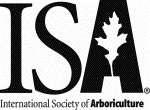
| Current Articles |
| Browse Archives |
| Search |
| Contact Us |
| AUF Home |
 |
Arboriculture & Urban Forestry Online
| Volume 48, Issue 6 —
November 2022
https://www.isa-arbor.com/Publications/Arboriculture-Urban-Forestry |
|
The Effect of Climbing Line and Ascent Technique on the Magnitude and Frequency of Arboricultural Climbing Loads Brian Kane and Sanjay R. Arwade Abstract: Background: Arboricultural tree climbing is inherently dangerous, in part because of the possibility of failure of the tie-in point (TIP). To help climbing arborists choose TIPs wisely, we have conducted several studies to quantify the magnitude and frequency of loading associated with arboricultural tree climbing. One parameter that has not been previously studied is whether the choice of climbing line influences loads experienced by a TIP as a climbing arborist ascends. Methods: The lead author conducted trials in which he ascended to 3 TIPs (in different trees) using 2 ascent techniques and 3 different climbing lines. During each trial, we measured loads at the TIP, and from the resulting time histories analyzed the magnitude and frequency of loading. We compared the effect of ascent technique, climbing line, and their interaction on the magnitude and frequency of loading. Results: During trials, the magnitude of loading varied between 1.1 and 1.5 times the lead authorís weight and did not differ between ascent techniques, climbing lines, or their interaction. Loading frequency varied among ascent techniques, but not climbing lines. Footlocking induced loads at a wide range of frequencies, but 2 distinct frequencies were associated with ropewalking. Conclusion: Climbing arborists can use the results of this and our previous studies to help select a suitable TIP. It is important for climbing arborists to understand the magnitude of forces associated with ascending into and working in a tree. Future studies should investigate the load-bearing capacity of a TIP from the ground. Keywords: Loading; Safety; Tie-in Point; Tree Climbing. |
Current Articles
| Browse Archives | Search | AUF Home | ISA Home
| Get Acrobat